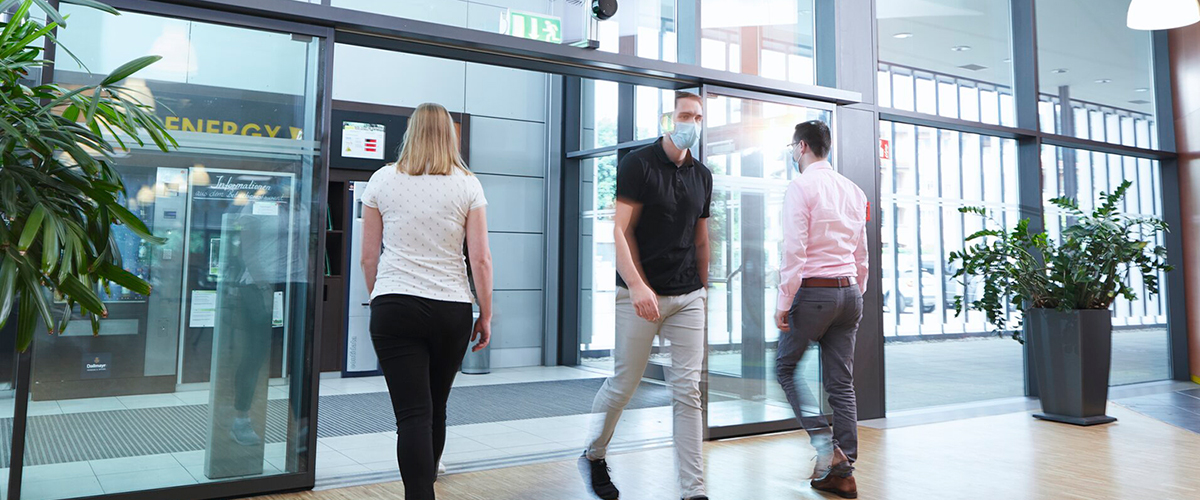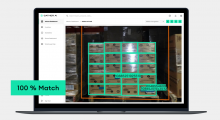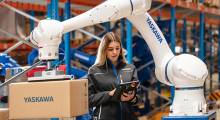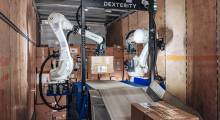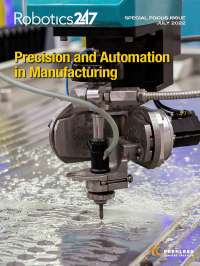Safety of Workers
From appropriate personal protective equipment to maintaining physical distance from other employees, this is an unprecedented time with the pandemic and many companies are not sure what steps to take to ensure the safety of workers in the time of Coronavirus.
There have been many different solutions proposed and implemented already. Due to COVID-19, it has become the new normal to conduct temperature checks of each employee, practice social distancing by ensuring employees stay six feet apart, monitoring occupancy levels, and keeping track of cleaning efforts to sanitize stations more frequently.
Some have even staggered shifts to avoid having too many people on the DC floor at one time.
But many are looking to technology for a more permanent solution.
One such example is the use of wristbands that vibrate to alert a worker when someone is too close. This method may work, but it’s not incredibly reliable and doesn’t help with contact tracing.
Monitoring Occupancy Levels
In reaction to new developments to slow the spread of the COVID-19 virus, SICK has launched its new PeopleCounter (PeCo) SensorApp. Using 3D LiDAR sensors, people can easily maintain recommended occupancy levels in public spaces and in manufacturing settings.
Unlike the use of camera technology, the PeCo LiDAR sensor solution does not process personal information. This ensures companies can maintain any health and safety recommendations, but also that private individual data privacy concerns are respected.
Operators of institutions of public life as well as those that deal in tourism, cruise ships, restaurants, retail, and various other industries can profit from a simple solution that makes it easy to safely maximize utilization of space and still maintain the required occupancy levels.
The PeopleCounter (PeCo) is a SensorApp developed by SICK that enables anonymous data processing and differentiation of people from objects over large detection areas.
Based on the hardware of the MRS1000 3D LiDAR sensor, measurement data is generated as a point cloud. The integrated PeopleCounter app reliably identifies people using their contours. This means only people above the height of 1.4 meters are counted, while objects are blanked out.
Thanks to the four layers of the sensor, the direction of the movement of a person is clearly established and the current utilization of a defined zone can be monitored.
The recorded data is output digitally to keep track of the maximum number of people allowed in space.
The combination of several sensors makes it possible to cover even large areas with different entry and exit areas, such as shopping centers, airports, or trade shows.

Maintaining Physical Distance
SICK USA has a method that can provide reliable detection of people to ensure physical distancing measures are continuing to be practiced. Using LiDAR and track and trace technology from SICK, DCs can effectively detect people, products, parts, and more to ensure the safety of everyone within a plant. This technology enables people to effectively practice social distancing in a distribution or fulfillment center while still operating efficiently.
LiDAR technology is commonly used on machines or mobile robots to protect people from harm. However, in this instance, LiDAR can be used to ensure people stay a safe distance apart from one another.
By installing a sensor in each work station, it ensures a six-foot distance remains between people at all times. The LiDAR essentially creates virtual walls to form a three-sided box around a workstation. Markings on the floor will indicate the exact location of the virtual walls so an employee knows when they may be breaching the barrier.
Tracking throughout the Facility
RFID tags can be implemented on workers’ hard hats to track where each worker is traveling throughout the facility. Each worker will wear a passive tag that can provide data to the manufacturer via an RFID reader. This is beneficial once a person is identified as a health risk. RFID tags on hard hats can help identify and track everywhere a person went in the facility and also who and what they were in contact with to conduct effective contact tracing.
The manufacturer can set each worker to an assigned zone where they are designated to work. If they enter into a zone where they are not authorized to work, the plant operator can be notified so they can take appropriate action.
In addition, if a worker breaches a LiDAR barrier on an unauthorized workstation, the sensor will be notified and alert the RFID reader to scan. The employee in the workstation will also be alerted and can take appropriate action to maintain the needed physical distance. The RFID reader will collect data on each worker, which can include name, title, department, and time of scan.
These methods ensure that the manufacturer can maintain cleanliness and sanitation standards. The RFID reader provides data on how many people were in each workstation at a given time based on the number of scans by the RFID tags.
These methods are new to every manufacturer, but may quickly become the new normal as times continue to change to adapt to the ever-changing manufacturing environment we are currently experiencing.
Related White Papers
How to Practice Physical Distancing
People counters, distance measurement, and contact tracing tools in manufacturing and public-facing Spaces. Download Now!
Article topics
Email Sign Up




